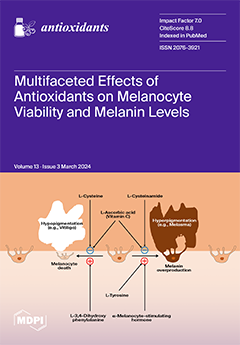Lead (Pb), a heavy metal environmental pollutant, poses a threat to the health of humans and birds. Inflammation is one of the most common pathological phenomena in the case of illness and poisoning. However, the underlying mechanisms of inflammation remain unclear. The cerebellum and the thalamus are important parts of the nervous system. To date, there have been no reports of Pb inducing inflammation in animal cerebellums or thalami. Selenium (Se) can relieve Pb poisoning. Therefore, we aimed to explore the mechanism by which Se alleviates Pb toxicity to the cerebellums and thalami of chickens by establishing a chicken Pb or/and Se treatment model. Our results demonstrated that exposure to Pb caused inflammatory damage in cerebellums and thalami, evidenced by the characteristics of inflammation, the decrease in anti-inflammatory factors (
interleukin (IL)-2 and
interferon-γ (INF-γ)), and the increase in pro-inflammatory factors (
IL-4,
IL-6,
IL-12β,
IL-17, and nitric oxide (NO)). Moreover, we found that the
IL-2/
IL-17–NO pathway took part in Pb-caused inflammatory injury. The above findings were reversed by the supplementation of dietary Se, meaning that Se relieved inflammatory damage caused by Pb via the
IL-2/
IL-17–NO pathway. In addition, an up-regulated oxidative index malondialdehyde (MDA) and two down-regulated antioxidant indices (glutathione (GSH) and total antioxidant capacity (TAC)) were recorded after the chickens received Pb stimulation, indicating that excess Pb caused an oxidant/antioxidant imbalance and oxidative stress, and the oxidative stress mediated inflammatory damage via the GSH–
IL-2 axis. Interestingly, exposure to Pb inhibited four
glutathione peroxidase (GPx) family members (
GPx1,
GPx2,
GPx3, and
GPx4), three
deiodinase (Dio) family members (
Dio1,
Dio2, and
Dio3), and fifteen other selenoproteins (
selenophosphate synthetase 2 (SPS2),
selenoprotein (Sel)H,
SelI,
SelK,
SelM,
SelO,
SelP1,
SelPb,
SelS,
SelT,
SelU, and selenoprotein (Sep)n1,
Sepw1,
Sepx1, and
Sep15), suggesting that Pb reduced antioxidant capacity and resulted in oxidative stress involving the
SPS2–
GPx1–GSH pathway. Se supplementation, as expected, reversed the changes mentioned above, indicating that Se supplementation improved antioxidant capacity and mitigated oxidative stress in chickens. For the first time, we discovered that the
SPS2–
GPx1–GSH–
IL-2/
IL-17–NO pathway is involved in the complex inflammatory damage mechanism caused by Pb in chickens. In conclusion, this study demonstrated that Se relieved Pb-induced oxidative stress and inflammatory damage via the
SPS2–
GPx1–GSH–
IL-2/
IL-17–NO pathway in the chicken nervous system. This study offers novel insights into environmental pollutant-caused animal poisoning and provides a novel theoretical basis for the detoxification effect of Se against oxidative stress and inflammation caused by toxic pollutants.
Full article






